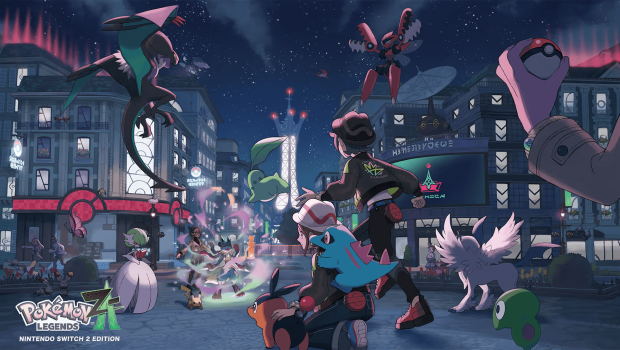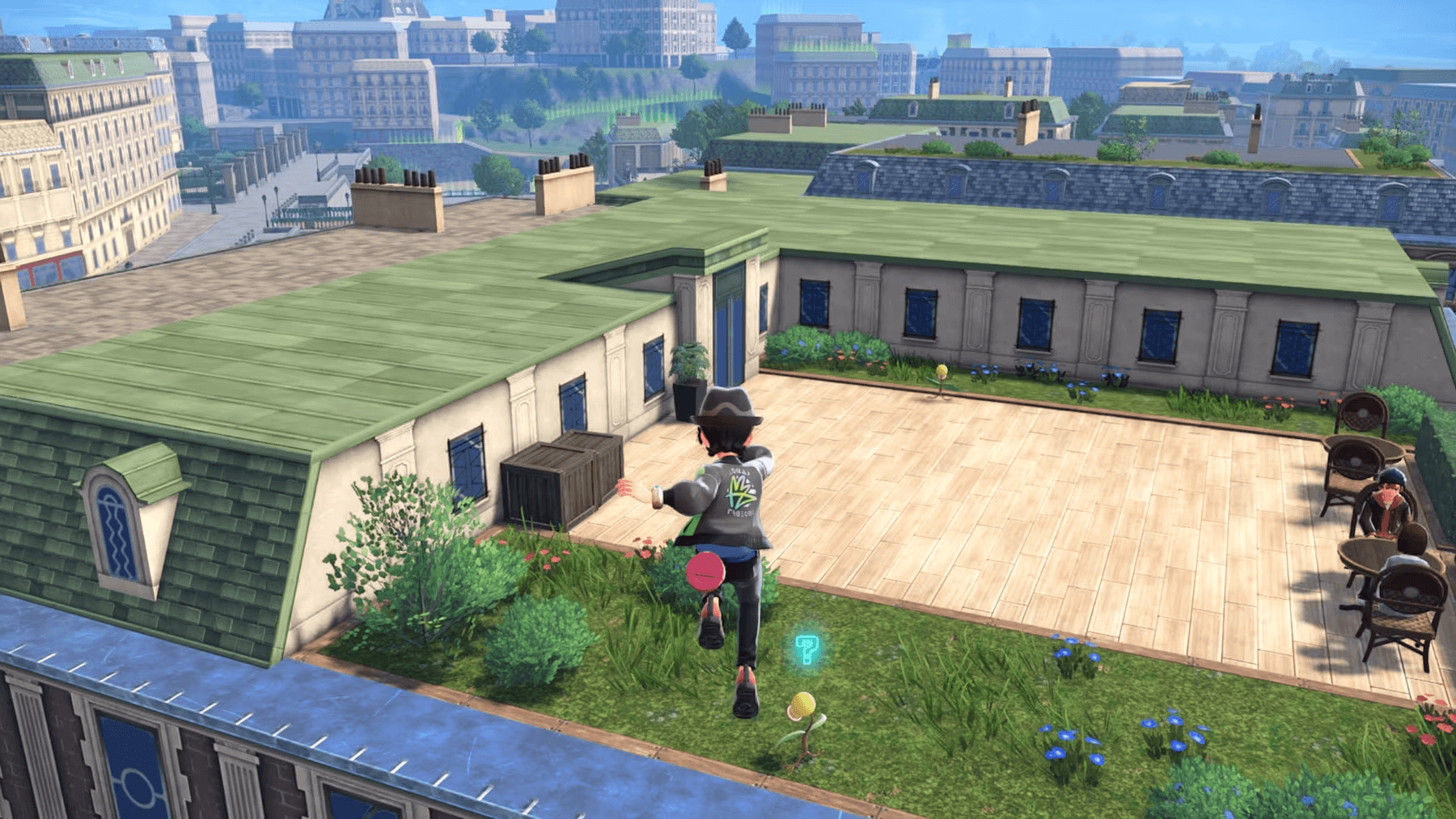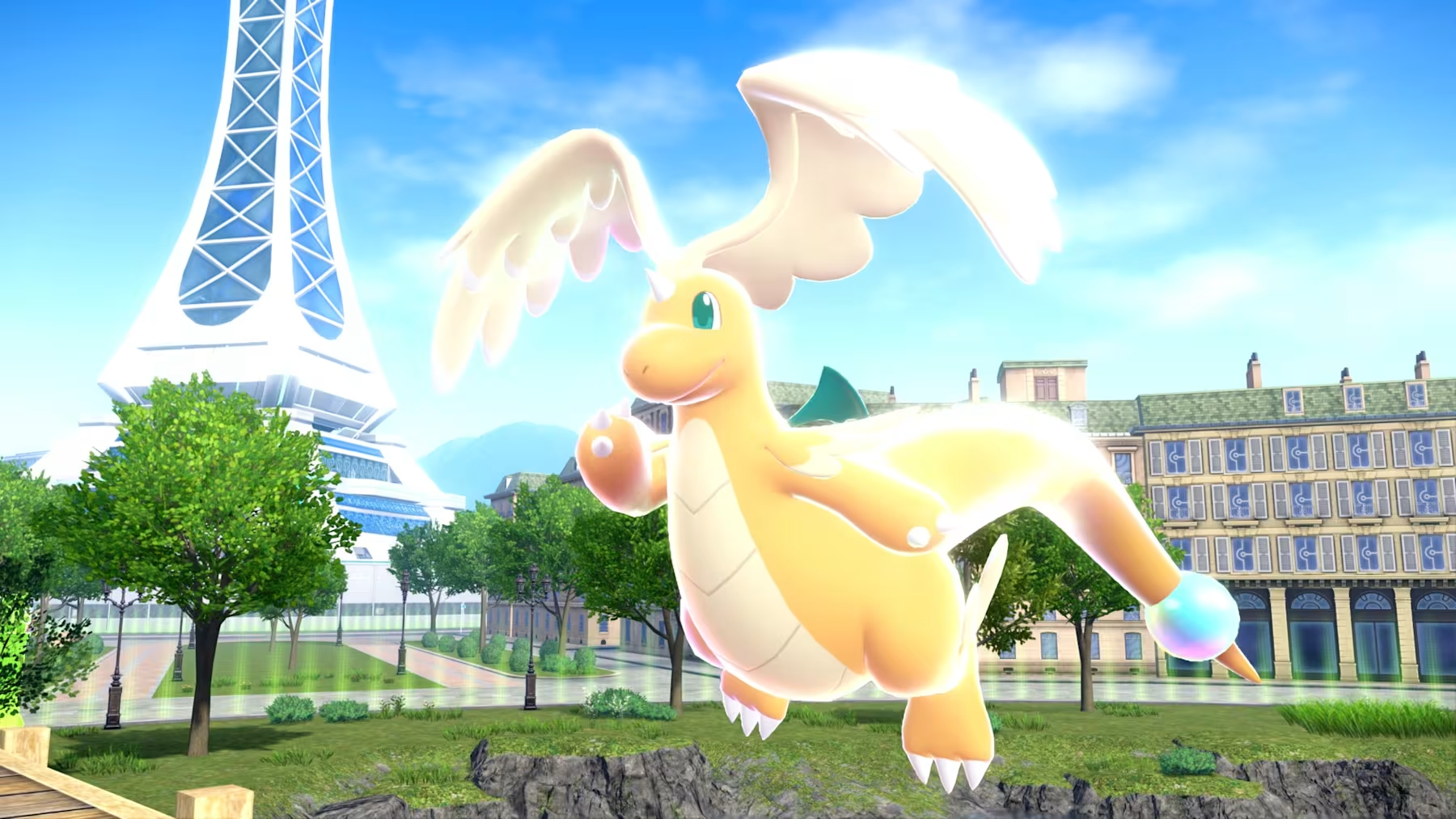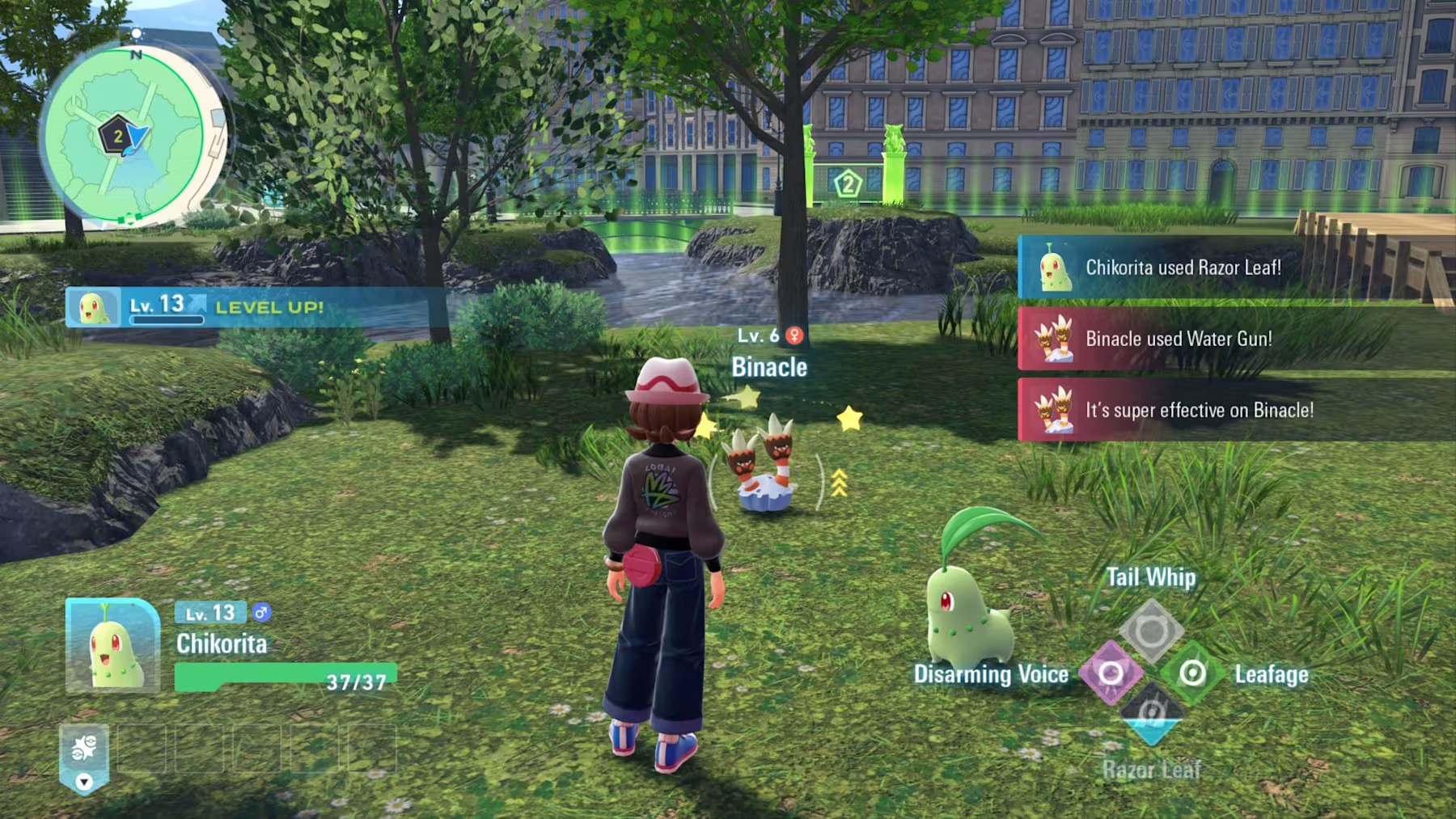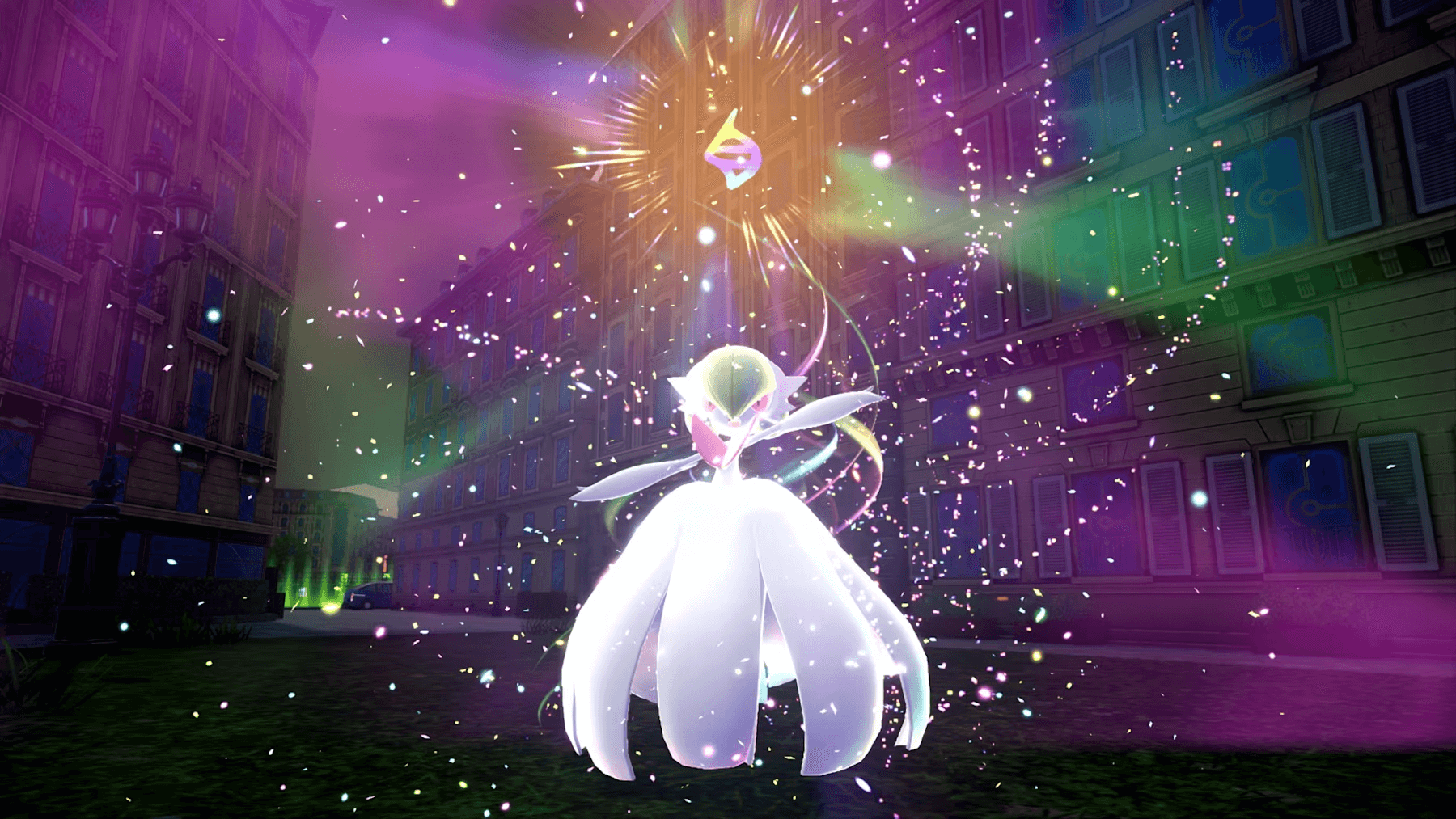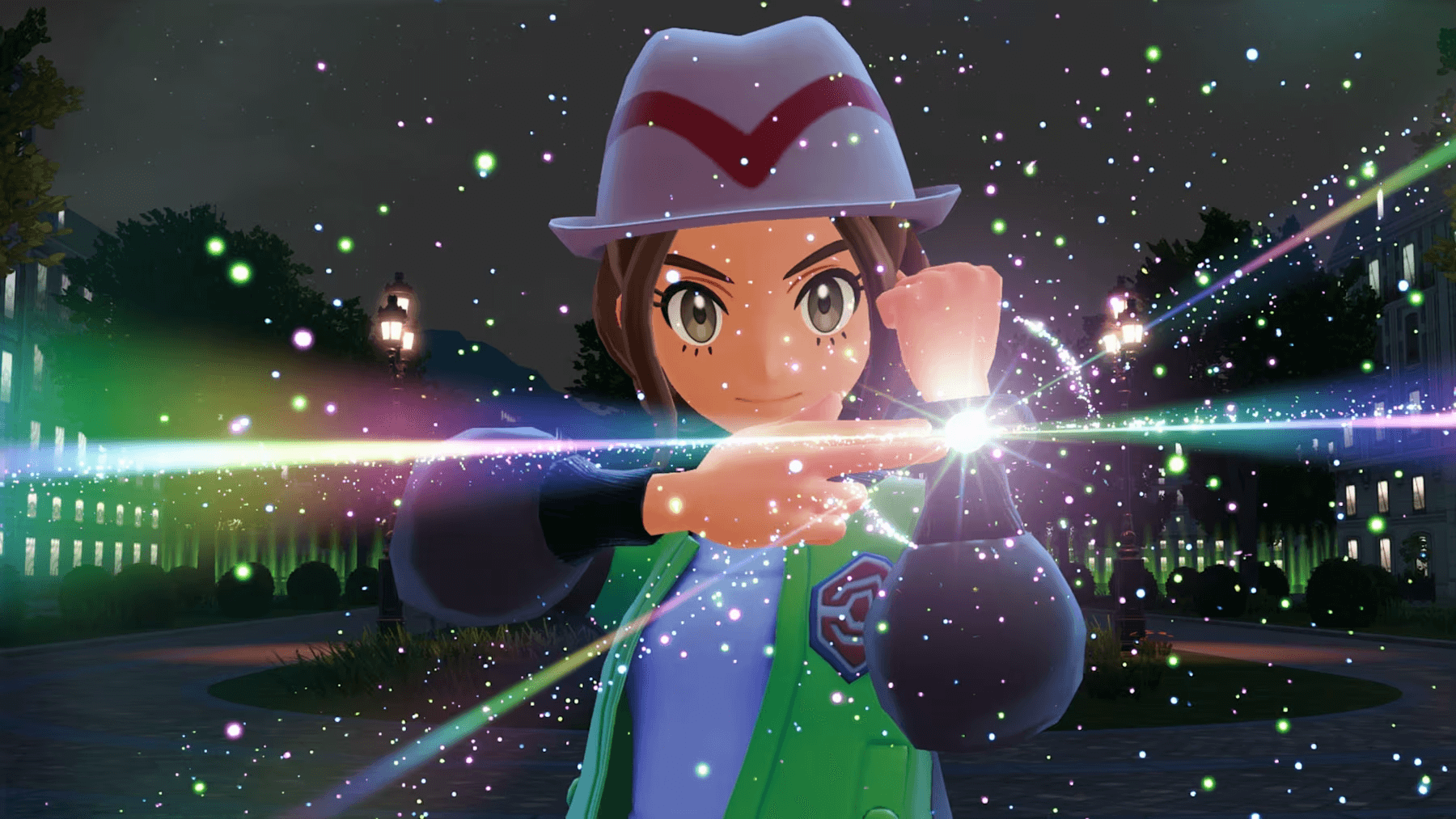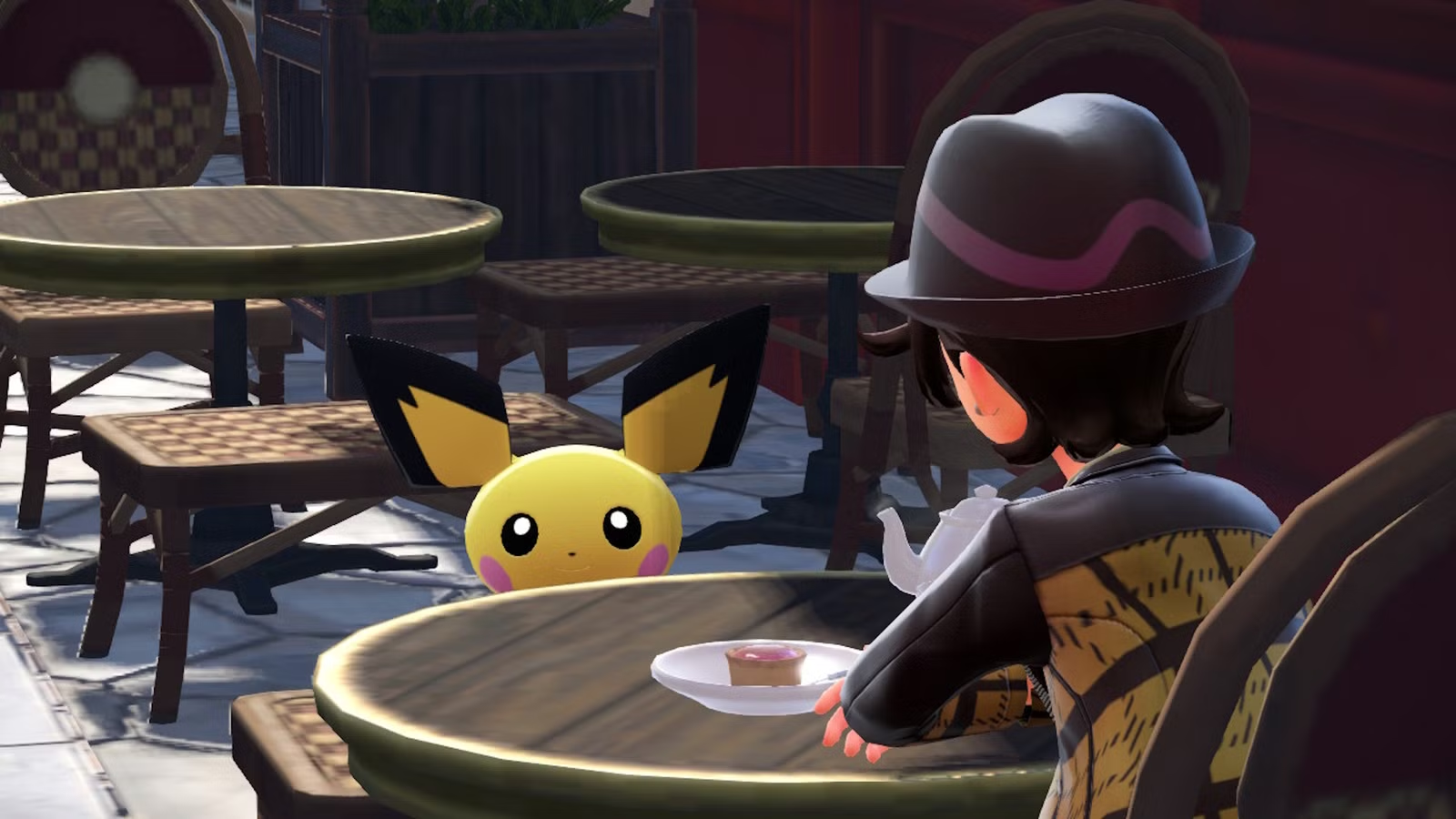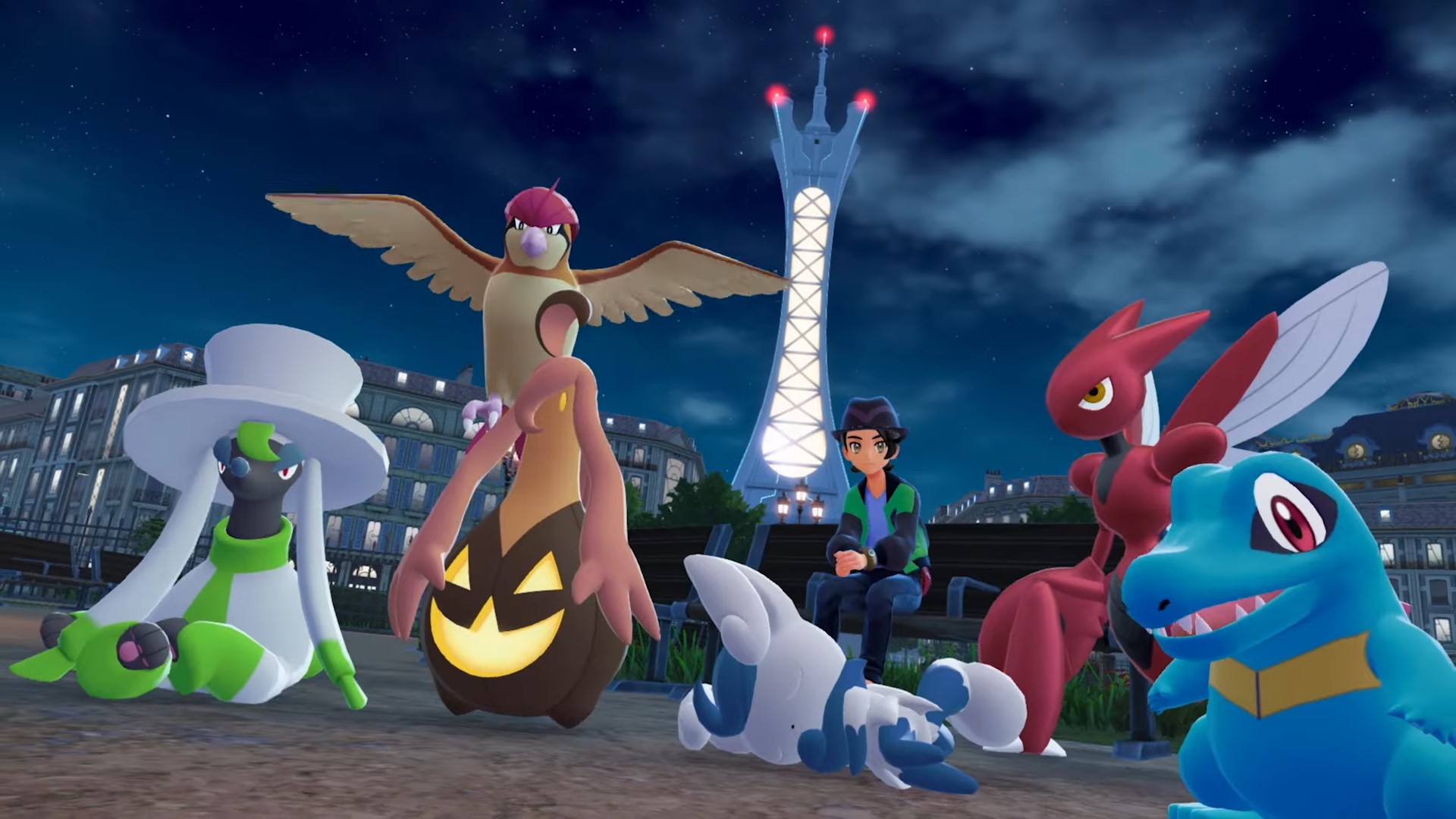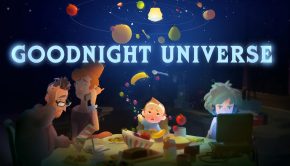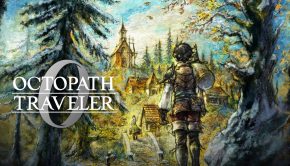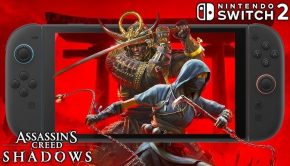Pokémon Legends: Z-A (NS2) Review
Summary: A more focused, streamlined Pokémon experience that trades rolling hills for boulevard cafes and a greater focus on characters and story.
4
City of Light
Pokémon Legends: Z-A trades the rolling hills, vast wilds, and world-building of Arceus for a fascinating slice-of-life tale in the bustling modern city of Lumiose, last seen in Pokémon X&Y.
This results in an experience that feels more focused, though no less experimental than its superb predecessor, that once again shakes up the storied series in new and exciting ways.
Players step off the metro and into the trendy high tops of a newcomer to Lumiose City. A tourist there to see the sights in the City of Lights.
After having their luggage stolen by a mischievous Pancham, they befriend the inhabitants of Hotel Z, where they also decide to stay in the city and join Team MZ, made up of other Pokémon trainers staging at the hotel who are all vying to go from rank Z to rank A in the citywide Pokémon league.
After a lengthy introduction, that sees you dragged around by either Taunie or Urbain, as they explain pretty much every facet of life in Lumiose, including the weird new zoning laws, strange nocturnal Pokémon trainer fight clubs, and the best place to hire a private eye, you can finally explore the city at your own pace, take in side missions, and get a decent haircut.
Lumiose is a fashionable place packed full of little cafes, clothes shops, and salons that let you customise your characters’ look to a surprising degree by changing your hair colour and style as well as mixing and matching dozens of items of clothing. It’s really easy to get your avatar looking très magnifique.
Exploring Lumiose is half the fun, and I would often find myself leisurely strolling the streets while picking up side missions, exploring the roof tops, snaffling spare items and clambering across the numerous scaffolds all around the city to collect rare items and colourful screws which can be traded in to improve your catch rate, cash received from battles, and XP received from fights.
One odd quirk, though, is that you can happily step off the side of the building with no repercussions (kids, your phone won’t save you from a four-story drop, so please don’t try); However, you can’t jump; you can only roll. Which makes for some odd moments when you’re trying to figure out the best way to get to an awkwardly placed item or a screw on a more complicated scaffold tower. (Kids also shouldn’t be climbing up scaffolding towers either.)
You would think that Game Freak would be able to program a simple jump button into the game. But nope. You have to roll from higher to lower parts and delicately line up falls to get to the next platform. This makes for far more faffing around than necessary in what should be simple platforming sections. Though this is slightly tempered by being able to use certain Pokémon moves to help cross gaps.
The platforming might be wonky at best, but the core of the experience: catching and battling those delightful pocket-sized monsters, is some of the long-running series best. The real-time battles feel like something akin to baby’s first Xenoblade, with positioning and timing of moves now just as important as move type. It’s also vital to place your Pokémon in the right spot when they’re about to use some powerful move and they’re the size of a bus. Like Gyarados. Oh, he looks great, but he couldn’t hit the side of a barn with Hydro Pump.
The Mega Evolution mechanics also feel like an intrinsic part of the experience now, rather than a nice addition that I’d use with my Charizard and little else. By expanding the number of Pokémon capable of utilising the mechanic and making many of the boss battles require you to engage with and use Mega Evolutions, it swiftly became another vital part of my strategies, especially during tougher battles.
The best part, though, is that your Pokémon don’t forget moves anymore; instead, they’re just added to their repertoire, and you equip four at a time. Allowing for many more potential combos and less time spent trying to find the best moveset. This is also beneficial because you no longer need to have a specific Pokémon to smash rocks, chop trees, fly, and swim.
Likewise, the Box system is accessible at any time from the menu, so you can quickly trade out Pokémon when you’re not in battle to easily tailor your party to battle different types of trainers.
Catching Pokémon is similar to Arceus. You’ll sneak up behind them, and chuck a poke ball at them with R. Your chances of catching them are increased by not being seen or beating the snot out of them and lobbing a ball at them when they’re dazed.
It does undermine the stealth elements a little, but it’s nice to have a backup for when you inevitably get spotted. It also doesn’t matter if you panic and miss with your Poké Balls either, as there’s a helpful chap outside of Pokémon centres now that collects them all up and returns them.
Where you catch Pokémon in Lumiose, though, isn’t as exciting. Instead of the varied biomes of your average Pokémon, you’re mostly stuck stalking them in Wild Zones. Small areas of the city that have been fenced off and packed with Pokémon like some kind of crooked African game reserve where they drug the buffalo and hand you a rifle. But in the heart of gay Lumiose.
I’m not a fan. For me, the best part of Z-A is when you get those moments that transport you to the world of Pokémon in a way that feels real and oddly grounded. When you stroll down the street and see a Pidgey on a lampost, the Trubbish surrounding a dumpster behind a cafe. People walking their Evees while Machomps help construction workers.
The graveyard doesn’t need to be designated a Wild Zone and fenced off. It would be far more entertaining if you just went to the cemetery, and they could have included a huge one if Game Freak really wanted to give us a more fleshed-out Parisian experience, to look for ghost and insect Pokémon, because that’s where they live.
That being said, the city is still fairly large, and there are no loading screens, which is a definite bonus. Likewise, on Switch 2, the draw distance is pretty decent, so you can easily spot items and Pokémon from afar, and it sticks to a stable 60fps even when things get hectic.
However, this could be because it can be incredibly sparsely populated at times, and many of the textures feel flat. It makes vague sense for the streets to be less crowded in the middle of the night, but it’s supposed to be a bustling city. You can often walk through fairly long stretches of streets without bumping into another person or Pokémon.
Maybe they’re just all asleep since half the city seems to be involved in its night-time Z-A Royale league that feels like the solution of a local government that’s had enough of trainers smashing up the city and endangering passers-by every time they battle. As such, Pokémon trainers in Lumiose fight in designated zones that change every night, thus keeping the disruption to a minimum.
The Battle Zones see you sneaking around a fenced-off area, trying to get the drop on your fellow trainers while collecting medals and attempting to win enough battles to unlock the next battle to increase your overall rank.
While doing this, you’ll also collect special cards that give you bonuses to your points and medals received for winning by performing certain actions like using super effective moves or finishing off opponents’ Pokémon with moves of a certain type. This not only means you don’t have to grind so much while trying to unlock the later matches, but it also stops the battling from feeling repetitive. It also adds an element of strategy as you can only hold three cards at a time, so it’s worth your while to have a hand that can be easily activated in the same match.
Sometimes when you beat a trainer, a yellow bubble appears above their head, and they’ll offer you new cards, poke balls, or heal your party.
This is especially helpful since you can end up fighting multiple battles back to back.
This Persona-esque approach to combat is one I prefer to the usual trainer battles that start with rival trainers eyeballing you and ending with you wishing the buggers would just leave you alone.
It also means you don’t end up running around desperately looking for a trainer you haven’t fought before.
This leaves your days free to run around the city and take part in what is by far the best part of the game. The numerous side missions dotted throughout the city work in a similar manner to the sub-stories in the Yakuza series.
Though most of them boil down to finding certain Pokémon, items, or battling, the writing and little stories that surround them have some of the best writing I’ve seen in the series that resemble the kinds of odd scenarios you might see in the anime series, and help to breathe life into an otherwise fairly barren setting. There’s a feisty Chespin attacking taxis, a group of mischievous Sewpa hiding in a museum that you need to round up, a sick Fennekin in desperate need of medicine, and much more besides.
The quality of the writing extends to the main campaign, which sees you spend time with your fellow teammates and get to know them, while facing a greater threat to the city from incredibly destructive rogue mega-evolved Pokémon going on a rampage. I have often found the main characters in Pokémon games seem a bit flat and functionary, they’re there to support the gameplay and little more.
Z-A bucks this trend by having a main cast you actually care about. You spend the game living and working alongside Taunie/Urbain, Lida, and Naveen. You get to find out their dreams, ambitions, and the monstrosity they think a serviceable curry is. Sure, the main crux of the story is still a simple save the city, but you care because you’re helping your friends. It brings some of the heart and soul of the anime to the games for once, and that is no bad thing
It’s just a shame the same can’t be said for Z-A’s presentation, which is starting to be beyond a joke at this point. I can accept the textures looking a little flat. It’s essentially a port of a Switch 1 game. But the sound design is baffling. The music is great as ever. It’s light, airy, and has some lovely nods and winks to X&Y. It’s a lovely accompaniment for when you’re wandering around the city and sounds suitably Lumiose, that is to say, French.
Where it falls down, though, is whenever you try and engage with any of the Pokémon. I know in the last few years, Game Freak took great pains to update the models of all the Pokémon. Now it’s beyond time to do the same with their voice acting. It’s 2025, your. Pikachu doesn’t need to sound like the death rattle of a Gameboy anymore; it can say: “Pikachu”.
What’s even more baffling, though, are the cutscenes. They’re cinematic, they look ace. The animation on the character’s mouth matches the subtitles perfectly. But they don’t bloody talk. It’s about time Pokémon had a voice. It’s not like there aren’t hundreds of hours of various voice actors doing all the Pokémon sounds they would ever want available to the team.
Final Thoughts
Pokémon Legends: Z-A feels less like a follow-up to Arceus and more like a complementary volume. While Arceus focused on how Pokémon lived in the wild before those pesky humans started domesticating them enough masses, Z-A instead offers a character-focused slice of life tale about how Pokémon and humans live together in the modern world.
Though Lumiose isn’t always, as bustling as I would have liked, though there are pockets of life I wish extended to the entire map, and the sound design (in all Pokémon games) is at a point where it needs a serious upgrade, the greater focus on story, fantastic real-time battle system and slick catching mechanics still make it a trip well worth taking.


